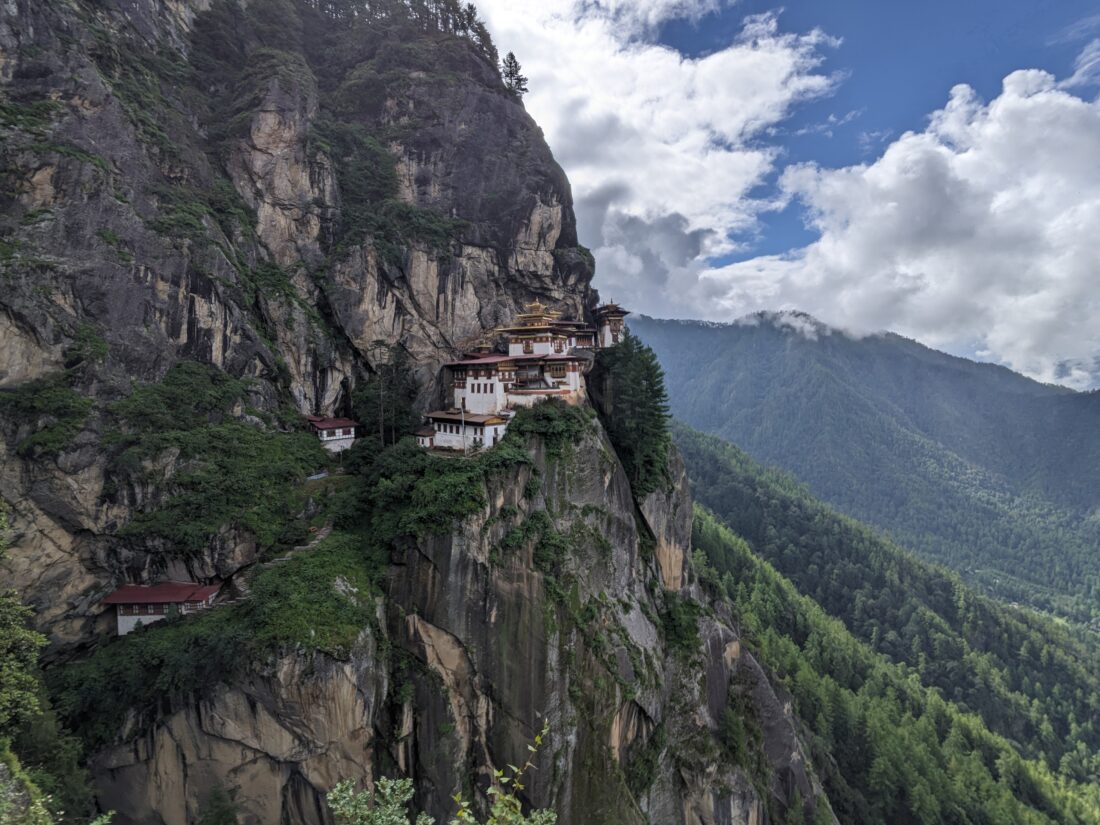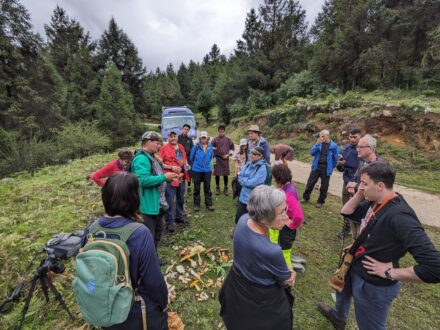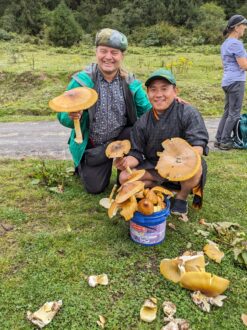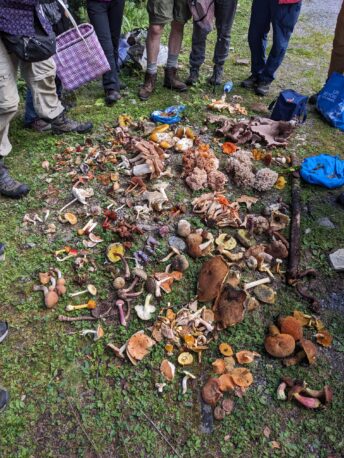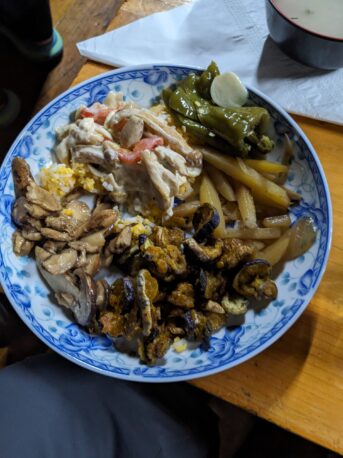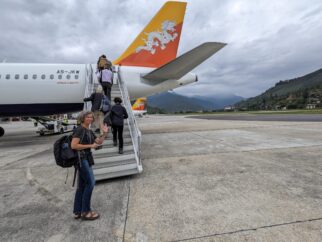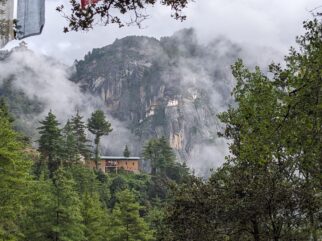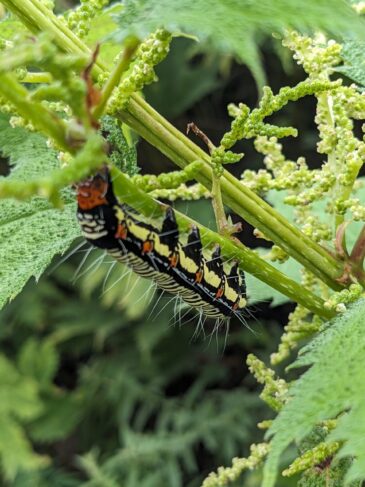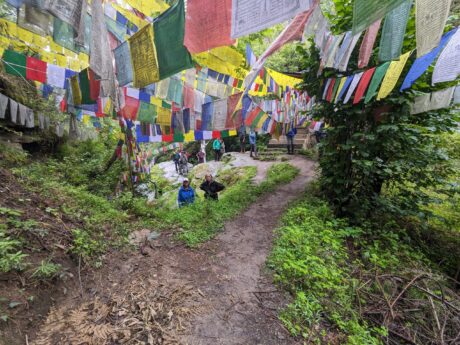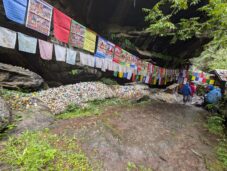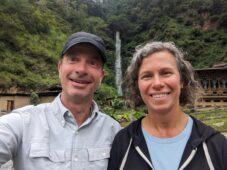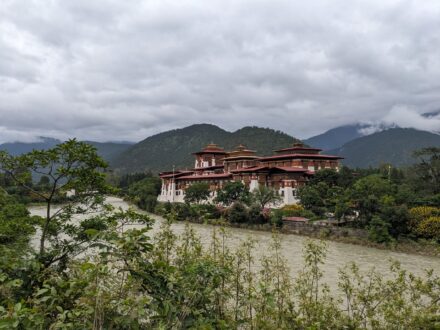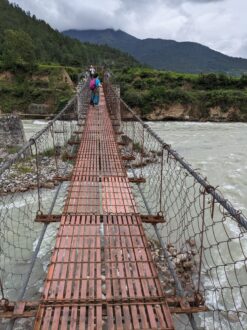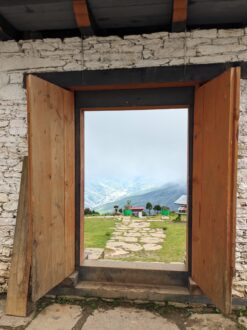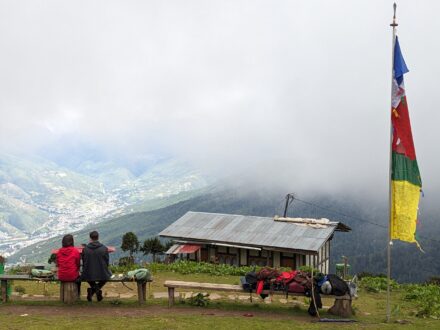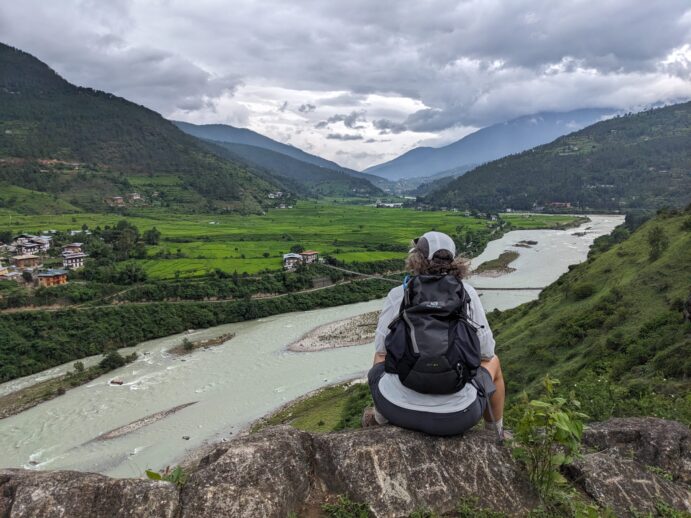Mushrooming in Bhutan
Mushroomers, it seems, will go to the far reaches of the planet to find these little prizes. And so it was that we found ourselves, Denise and I, halfway around the world in the foothills of the Himalaya mountains during monsoon season.
We had signed up for a fantastic-sounding 2022 trip billed as “Mushrooms, Mountains, and Monasteries” through Daniel Winkler’s Mushroaming tours, but Bhutan reopened its borders for tourism just after the 2022 mushrooming season. What’s a mushroomer to do? Go in 2023 of course, and we did.
There are only two flights into Paro, Bhutan, one via New Delhi and the other via Bangkok. We chose Bangkok and used it as a few day layover to help with time zone acclimation. The flight from Bangkok into Paro was nothing short of a spectacle. Apparently, there are only a few pilots in the world who are even qualified to run the gauntlet of high mountain maneuvering that is required on the approach to Paro. We all, every single one of us in that plane, gawked through the windows at what I can only describe as though you are floating down the river through the grand canyon with its sheer cliffs passing by on either side of your boat at over 150 mph. What a way to start the trip!
Once landed and gathered with our little fellowship of mushroomers, we met our local guides of “Homestay Bhutan” headed by Sonam, whom we would quickly learn was an awesome human being and a fount of knowledge on all things Bhutan. We boarded a transport minibus that took us to Thimphu, the capital city, and into our lavish accommodations for the next 3 nights as we acclimatized to both the timezone and the altitude. We ultimately started our tour of Bhutan from Paro with a rough west to east itinerary, including stops at Genekha, Punakha Dzong (Dzongs are the old fortresses), Trongsa Choekhor Rabtentse Dzong, the Ura valley, the Tang valley, Jakar (Chamkhar), and finally a flight back to Paro from Jakar. So over the next week or so we traveled in our little bus and tramped about the hillside, always near the mountains but never quite able to make them out due to the cloud cover that hid the peaks of the Himalayas from us. Where we may not have found success in finding the peaks, we more than made up for in finding loads of mushrooms, cooking loads of mushrooms and eating loads of mushrooms. This was a mushroom trip!
We even got to watch Daniel as he bisected a cordyceps (think the TV show “The Last of Us” to get an idea of what this bugger is).
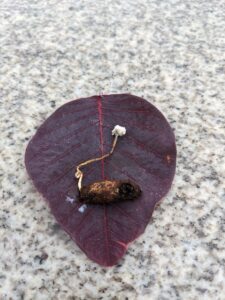
Cordyceps
Here’s how it works: A cordyceps spore lands on and infects its host, which is typically a bug. It then starts to spread mycelia (or tendrils) throughout the insect’s body. Those tendrils replace the host’s internal tissues and feed off of its nutrients. Once the insect is fully paralyzed or dead, the cordyceps fungus erupts out of the insect’s body with a fruiting body (the visible reproductive structure of cordyceps). This fruiting body then spreads its spores to other insects of the same species. (read more if interested).
Along the way we witnessed a small village festival dedicated to the matsutake mushroom, complete with dancing, food and the most welcoming people you can imagine. Denise even had a matsutake daiquiri…and it was good! We visited farmers markets, and even stayed in a farm homestay in a traditional Bhutanese house for a few nights. As to the food, it was quite good at the hotel restaurants and homestays. The food in “regular” restaurants was pretty mediocre, which is what we had read in advance. Thankfully, we only had two meals in restaurants outside the hotels in our two weeks. We ate our fair share of chili cheese (cheese chunks mixed with sauteed chilis, the spice level of which ranged from mild to inedibly hot for us) and other Bhutanese specialties, including momos (basically steamed potstickers). Sonam told us that in Bhutan, they do not consider the chili pepper a spice, but a vegetable. That was clear!!
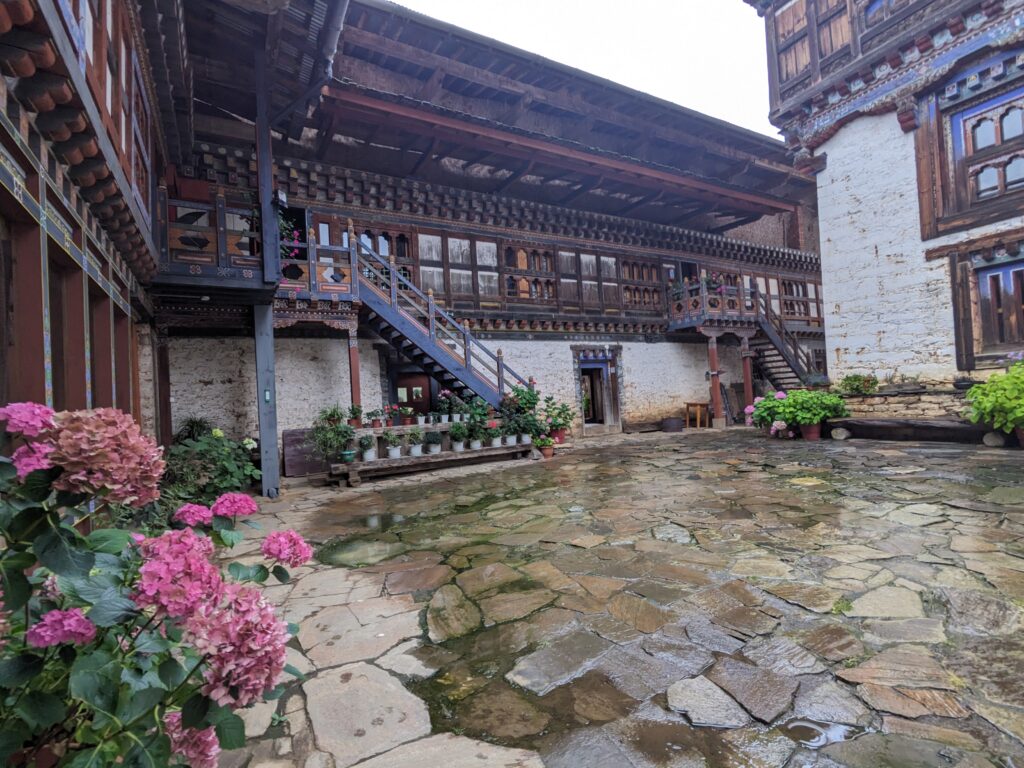
I feel like we got lucky with our group. They were great. Always the big unknown: how are we going to get along with 14 other souls who ranged in age from 24 to 82. We hadn’t done a guided tour like this before, and we learned most of those in our group hadn’t either. Daniel and Sonam were the glue and they did a fantastic job of keeping our interest aligned on the mushrooms and other points of interest regarding Bhutan. There was enough walking and hiking available to keep us from getting too restless as well. Most of the hiking, when not involving mushrooms, was to trek up to various Buddhist temples and learn about when and why this particular temple was erected and to which deity it might serve. On the last full day, we got to trek up to the fabled “Tiger’s Nest” and what a crown jewel it was. Beautifully set on the side of a sheer cliff, the trek up was exhausting but rewarding.
All in all, we’d like to go back to Bhutan to do some real trekking, ideally with Sonam as our guide. Next time however, I think we’ll avoid the monsoon season and hope to see the peaks that make up the vast Himalayan range.
